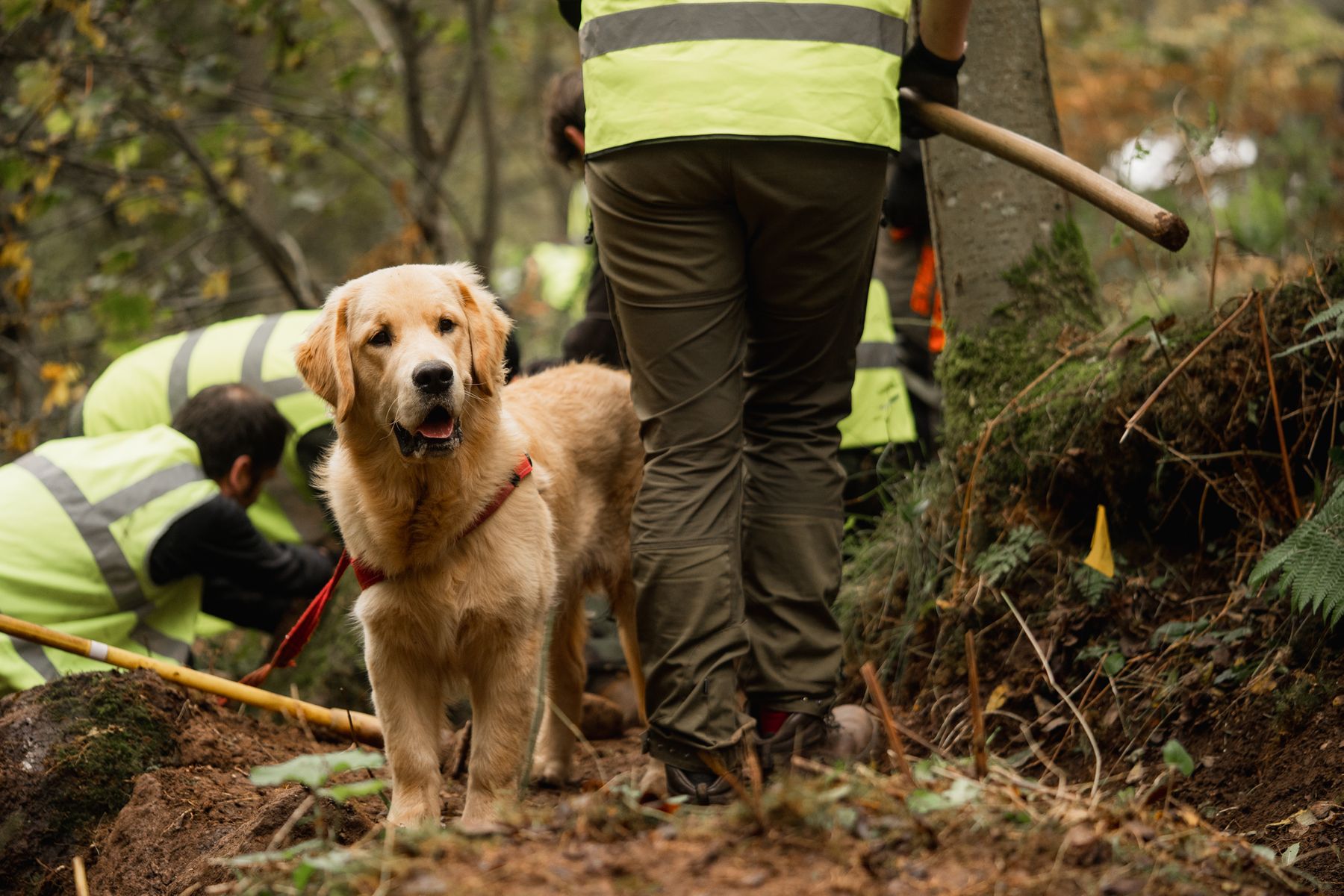Way back at the 2018 Scottish Mountain Bike Conference, a day was given over to a first ever “Trail Summit”. It had a day of presentations and discussion, and finished with some actual trail building on a chilly hillside near the Laggan Wolftrax trail centre. There were famous names from the mountain bike world, volunteer trail builders, and most interestingly, staff from some of the big land managers, all pitching in to help improve a network of unofficial trails that had local riders had built as a more natural counterpoint to the main trail centre.
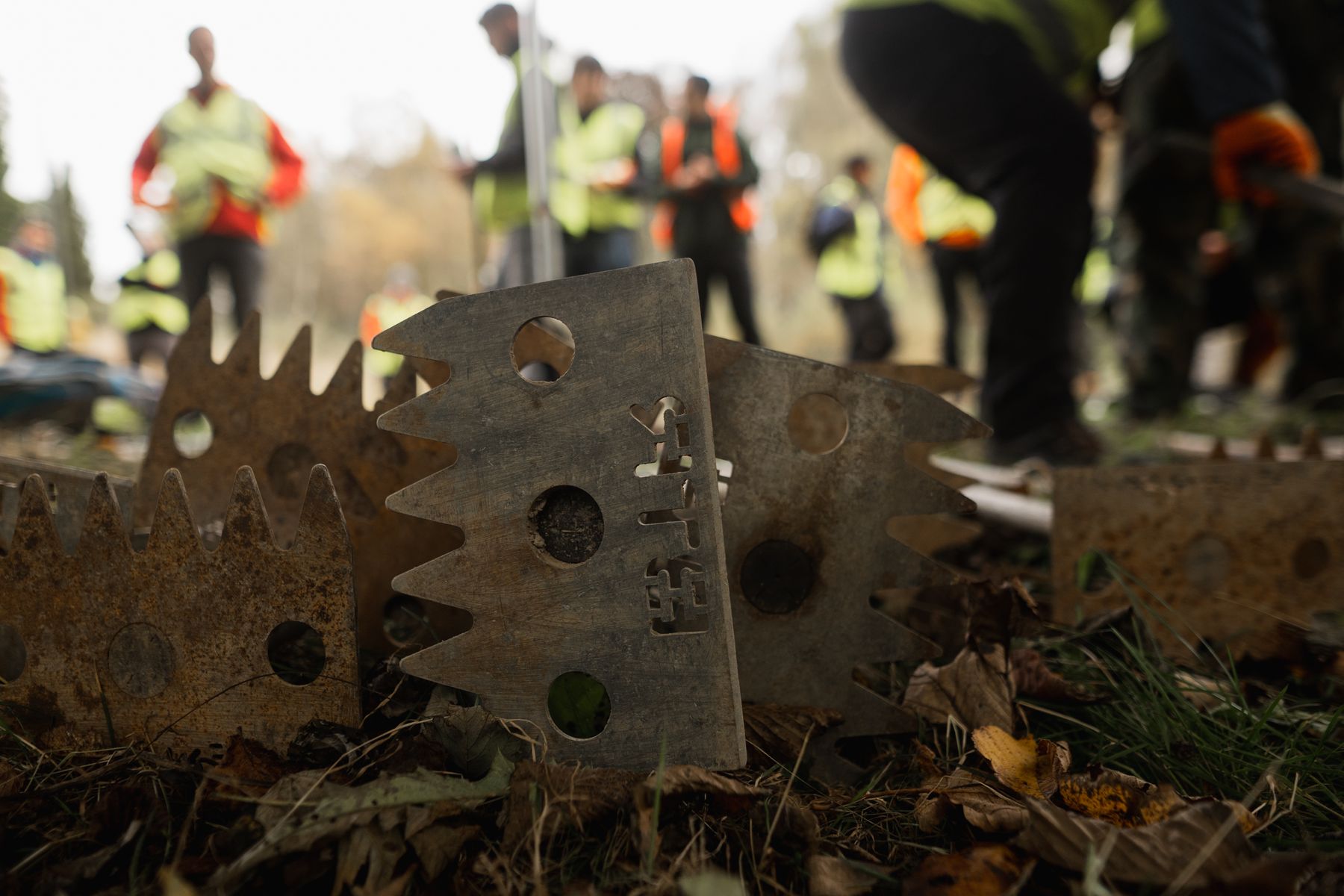
Since then, while much of the world ground to a halt, outdoor recreation has grown to a level no-one could have anticipated, and so has the number of rider-built trails criss-crossing our moors and forests. The question is whether this is going to mean a breakdown in trust between riders and land managers, or increased acceptance of this style of trail and more dialogue and engagement.

Summit organiser Developing Mountain Biking in Scotland (DMBinS) has already built up a hefty wodge of resources for anyone looking to develop or manage trails. In particular its Unauthorised MTB Trails Guidance sets out ways that riders and land managers can work together, and identifies a key role for formal trail associations. It’s these trail associations which DMBinS hopes will form a link between the mountain bikers building in the woods and representatives of private landowners or national agencies.
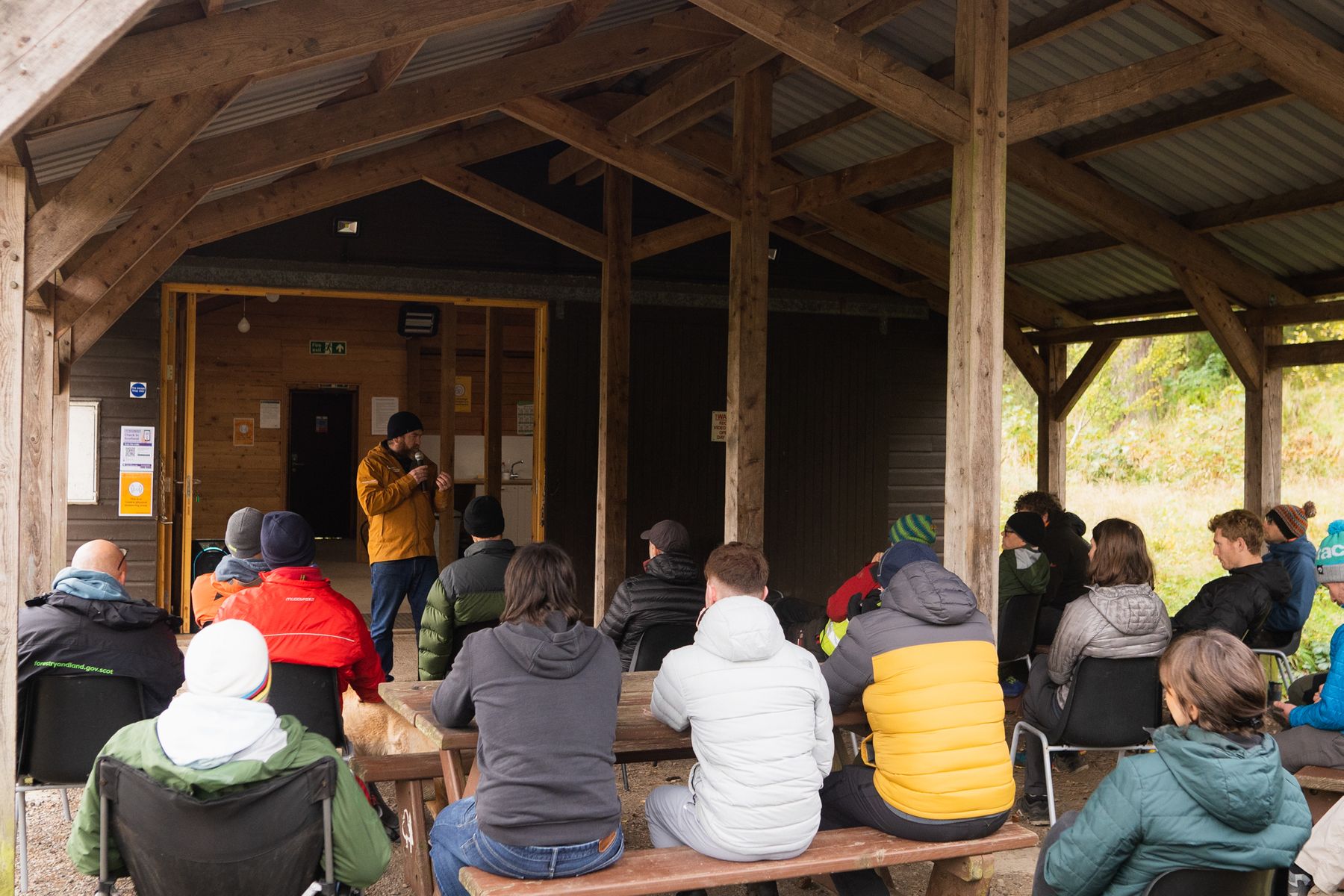
This year’s Summit was held at Kinnoul Hill near Perth, a public forest park with a mix of official and unofficial trails. The original unsanctioned downhill trails were redeveloped by Forestry and Land Scotland (FLS) into a mini bike park, but a network of rider-built trails have also sprung into life, which host the fancy-dress Fair City Enduro.
Sitting on picnic benches in an open-sided shed, we listened to presentations from DMBinS’ Graeme McLean, and John Ireland, Forestry and Land Scotland’s health and safety manager. The morning was rounded out by Naughty Northumbrian event organiser Tommy Wilkinson and former DH world champ Manon Carpenter, who are currently finishing off their first film together as part of the Soil Searching project. Several months in the making, it’ll be an overview of the sustainability of the UK’s trails and the potential implications this could have for the future of mountain biking.
Trail Association Nation?
The mountain bike scene in Scotland is changing rapidly. After the trail centre boom of the early 2000s, which saw venues like the 7Stanes package up mountain biking into a genuine tourist attraction, development slowed. Local riders reacted by building steeper, techier trails themselves, mostly in Scotland’s huge areas of publicly-owned forest. Now, some of these, such as the Golfie trails in the Tweed Valley’s Caberston Forest, are attracting comparable numbers of riders to the official trail centre just up the road. The rest of the UK is following this trend. As Manon Carpenter put it, “In Wales more riders use wild trails than the official stuff” – a statistic that actually came from staff at Natural Resources Wales, the country’s government forestry agency.
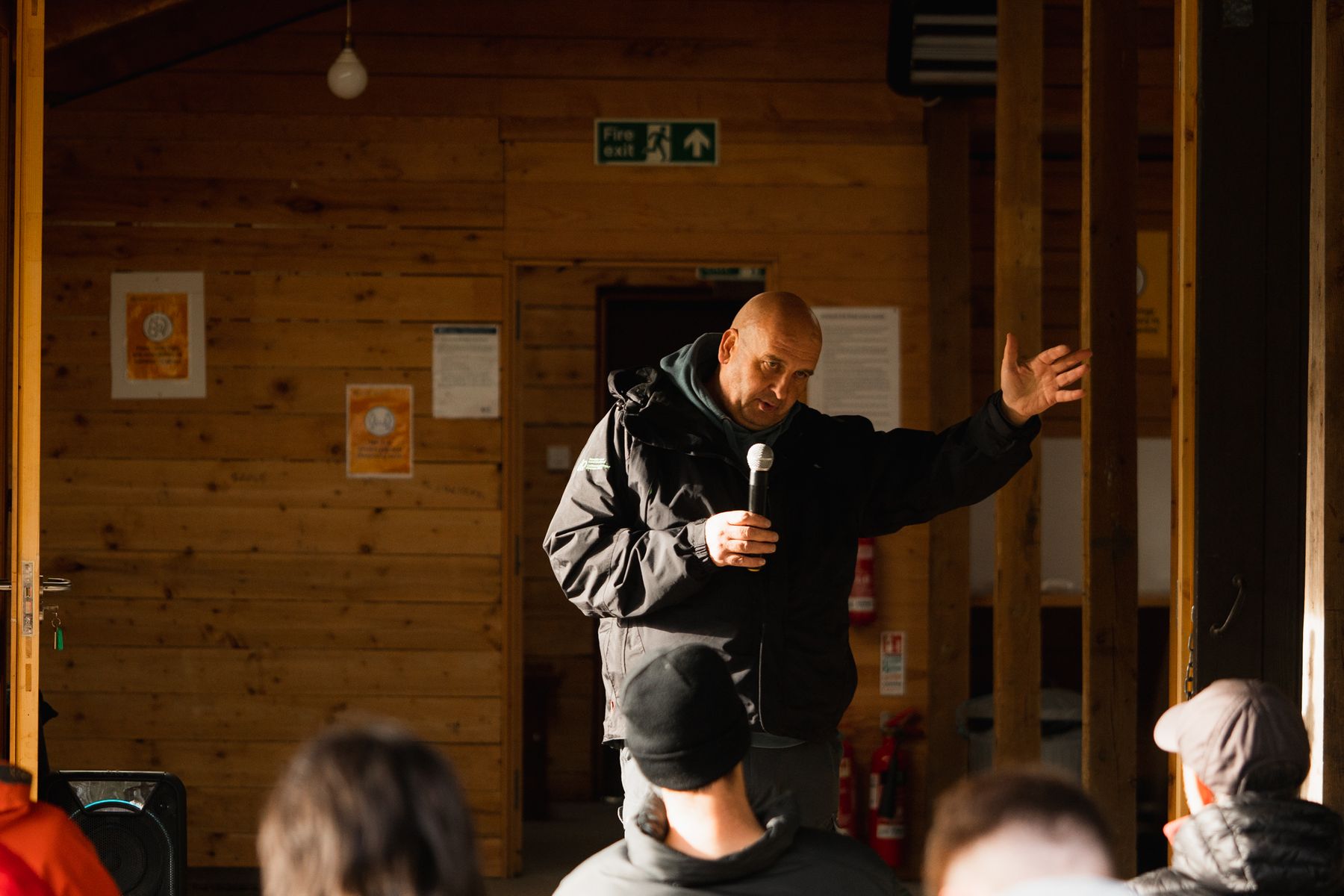
Whether you call them “rider-built”, “wild”, or “illegal” trails, these show no signs of going away, and from a land manager’s perspective, removing them can be just as problematic as leaving them alone, particularly with Scottish access law’s opposition to fencing off areas of countryside.
It’s not just in Scotland: in the rest of the UK, with a few exceptions, nearly every publicly owned forest is open to bikes. Then there’s the fact that government forestry staff are thin on the ground – in Scotland, FLS manage 10% of the country by area, but only have 1100 staff. Another of John Ireland’s statistics – “More people visit us than visit the seaside” – puts the pressure the service is under into stark perspective.
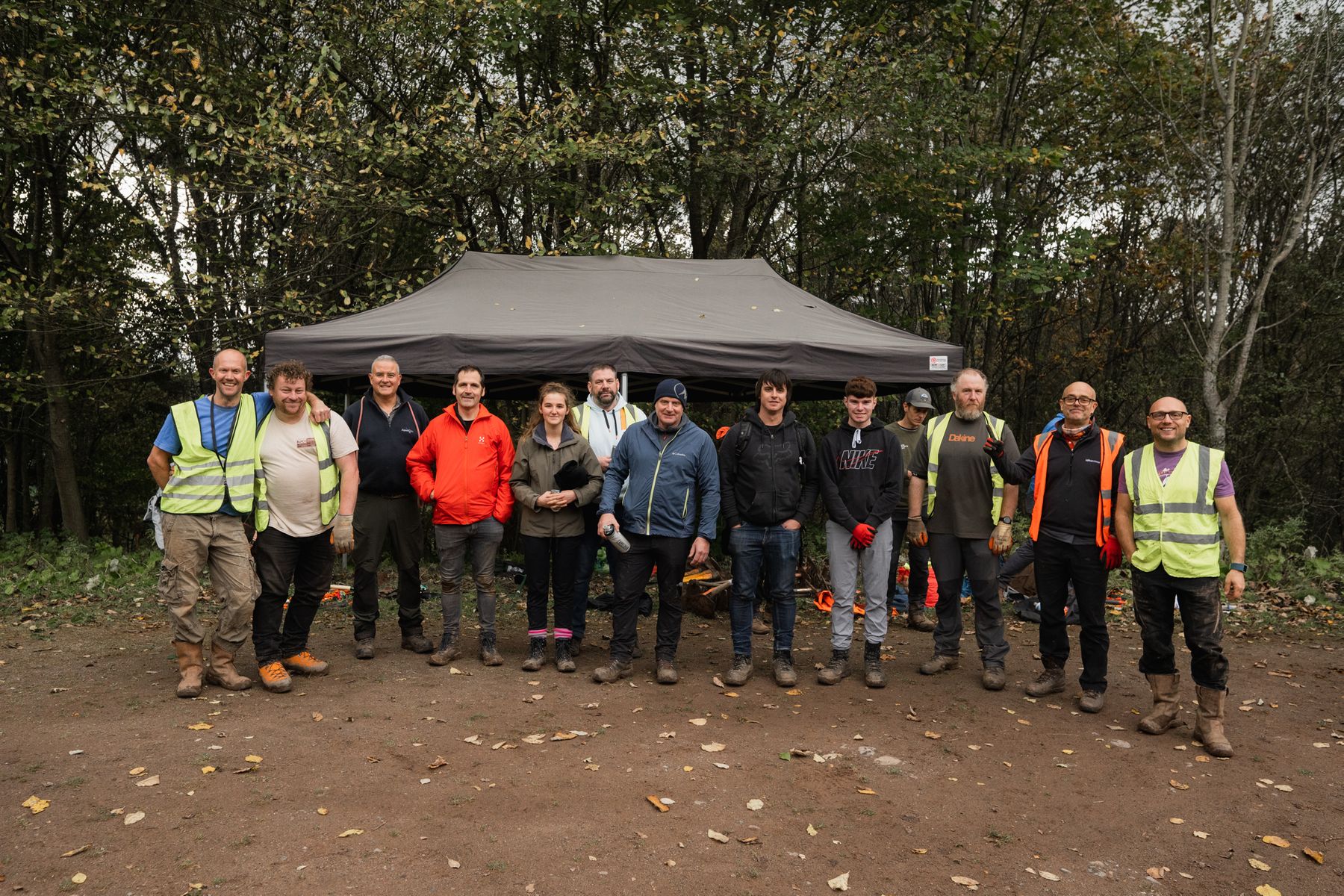
Enter trail associations: constituted groups that can help both riders and land managers by developing an area’s trails within certain boundaries. Scotland has a growing number of trail associations covering many of its prime locations for mountain biking, as well as places that are aiming to expand their appeal. Tweed Valley Trail Association is one of the most high profile, but there’s also Aberdeenshire Trail Association, Tayside Trail Association, Badenoch and Strathspey, Golspie Highland Wildcat, Highland Trail Riders, Lochaber Trail Association, the Mast Riders MTB Club, and more. A trail association can make agreements with landowners, organise trail construction and maintenance, apply for funding, and act as a point of communication. As Graeme McLean says, “If your trails are aimed at economic development or in an area with environmental sensitivity, you probably need a trail association.”

In some areas, such as Aberdeenshire, trail associations are developing areas that were off the MTB tourism radar into proper destinations. In others, they’re making trail networks more sustainable and less of an issue to land managers, which secures the future of places to ride.

It’s not just in Scotland: Manon and Tommy cite Ride Sheffield as a group that’s made massive strides to improve mountain biking in their corner of Yorkshire, from new trails at Lady Cannings Plantation to the well-received Be Nice, Say Hi campaign. Tommy Wilkinson points to their willingness to work with partners as a factor in their success: “They’ve broadened their knowledge base, working with wildlife trusts and universities. That means they can go somewhere like Grenoside Woods, even though it’s a nature reserve, and put in trails.”
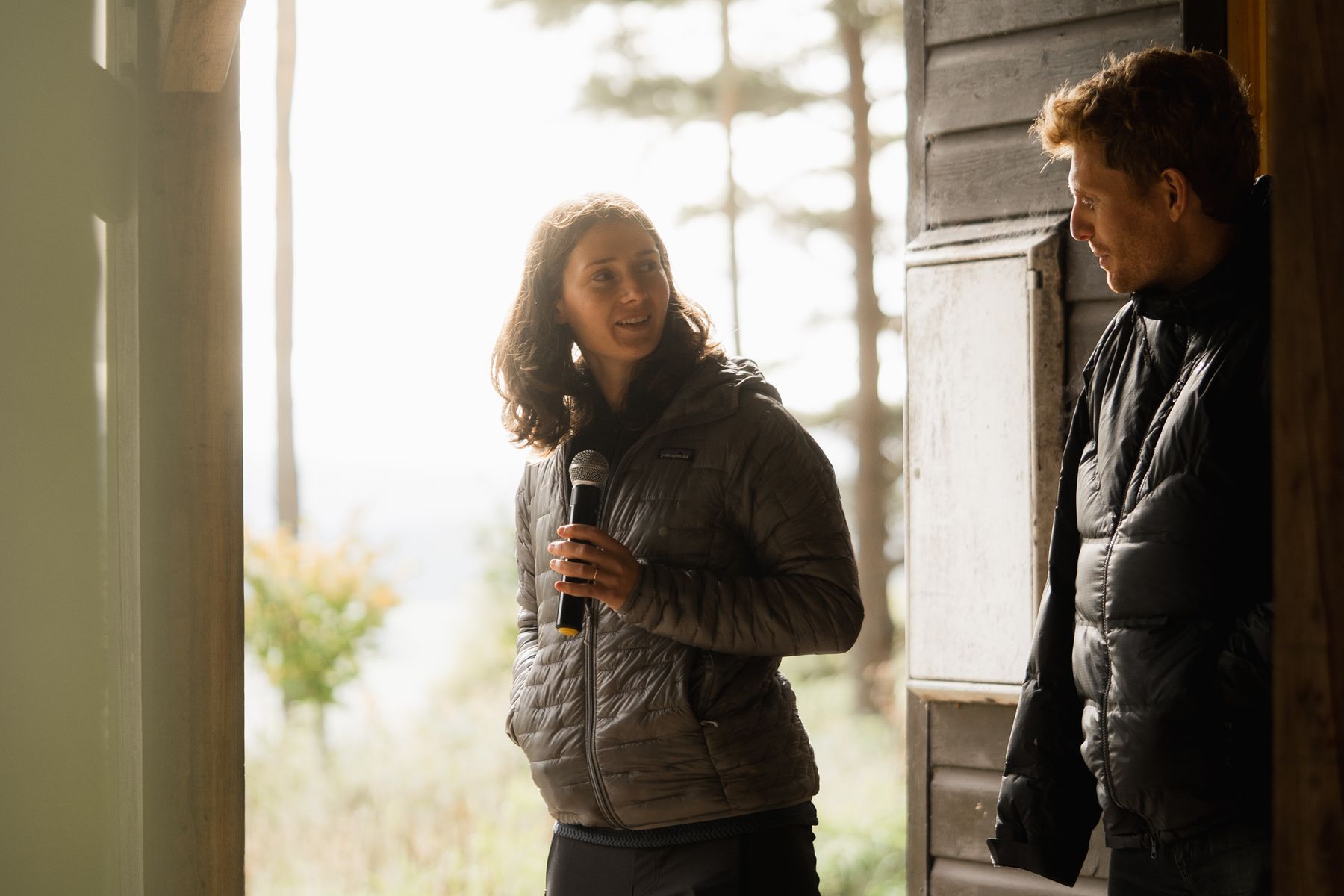
The Next Level
For DMBinS, the trail association model is key to managing Scotland’s network and making sure that things are kept sweet for riders and rangers alike. Graeme sets out their ambitions, which include turning volunteers into employees: “Scottish Cycling is looking to put someone in post for Tweed Valley Trails Association, but in the long term we want to see trail associations employing staff directly.” There’s also a programme offering 30-hour training sessions for trail session leaders, “To take it to the next level”. Funding for these initiatives is going to come from a number of sources, including a partnership with travel booking website Expedia where 5% of each booking fee goes to local trail associations.
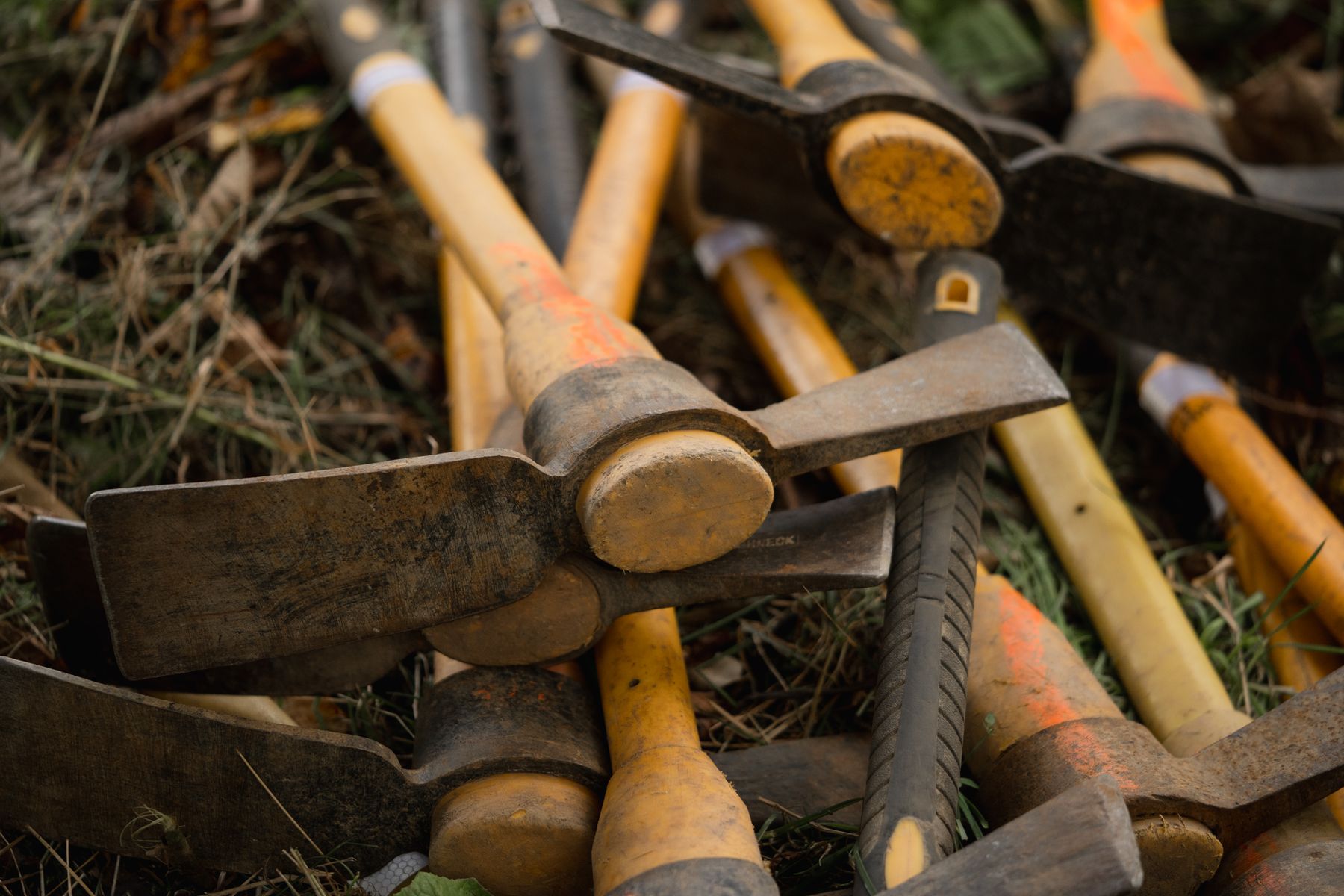
Could this model roll out elsewhere in the UK? Arguably it’s already happening in places like Sheffield and the Peak District, but others have more work to do. As Manon says: “In Wales where I am at the moment there’s no possibility of having organised digs, but it’s amazing to see this happening elsewhere. In Scotland communication has been going on for much longer. You have access rights and this culture of responsibility. Ride Sheffield are trying to work with other users and stakeholders to make mountain biking on an equal footing with other user groups. This hasn’t happened instantly, they’ve been going to access forums for eight or ten years. We do have a way to go on that in Wales.”
John Ireland is keen to stress that trail associations aren’t one size that fits all: “Some areas have disparate groups and the model doesn’t work as well. There’s a big element of trust. Sometimes there’s no formal relationship – it’s just us talking to them or them talking to us.”
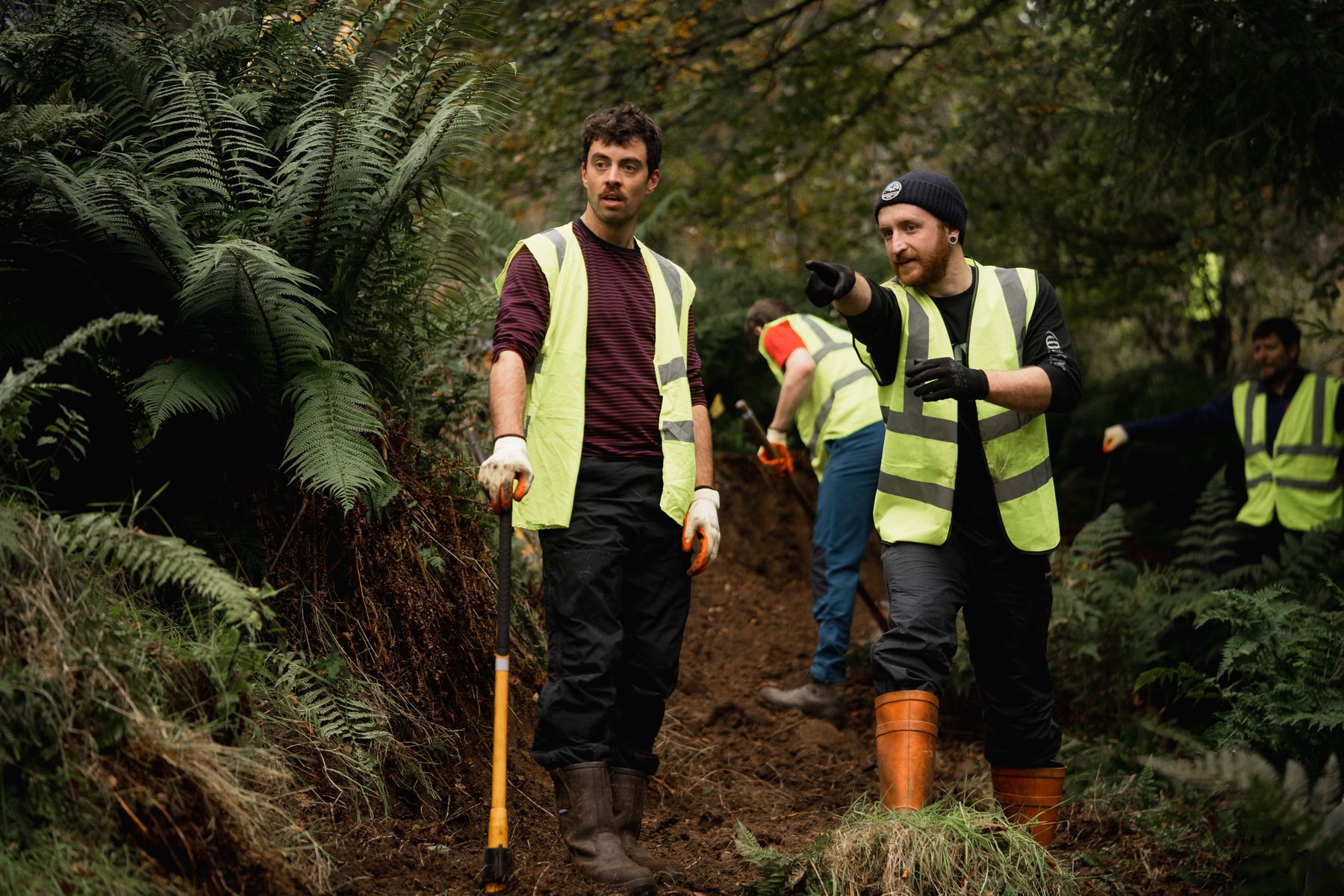
There’s lots more happening in Scotland than just trail associations. An £8 million Cycling Facilities Fund announced in October 2020 is on course to deliver up to 43 new pump tracks and 35 smaller trails. The Scottish Mountain Bike Mental Health Program, originally dubbed Trail Therapy, is expanding, giving more people with mental health issues the chance to discover the benefits of mountain biking. And there are a number of long-term, high capital plans in the works, including the Tweed Valley Bike Park and a refresh of the 7Stanes network.
Practical Action
The final half of the day was spent putting the trail association model into practice, as we headed up the fire road to the bottom of the bike park and turned a line of flags into a fresh section of beginner-friendly trail.
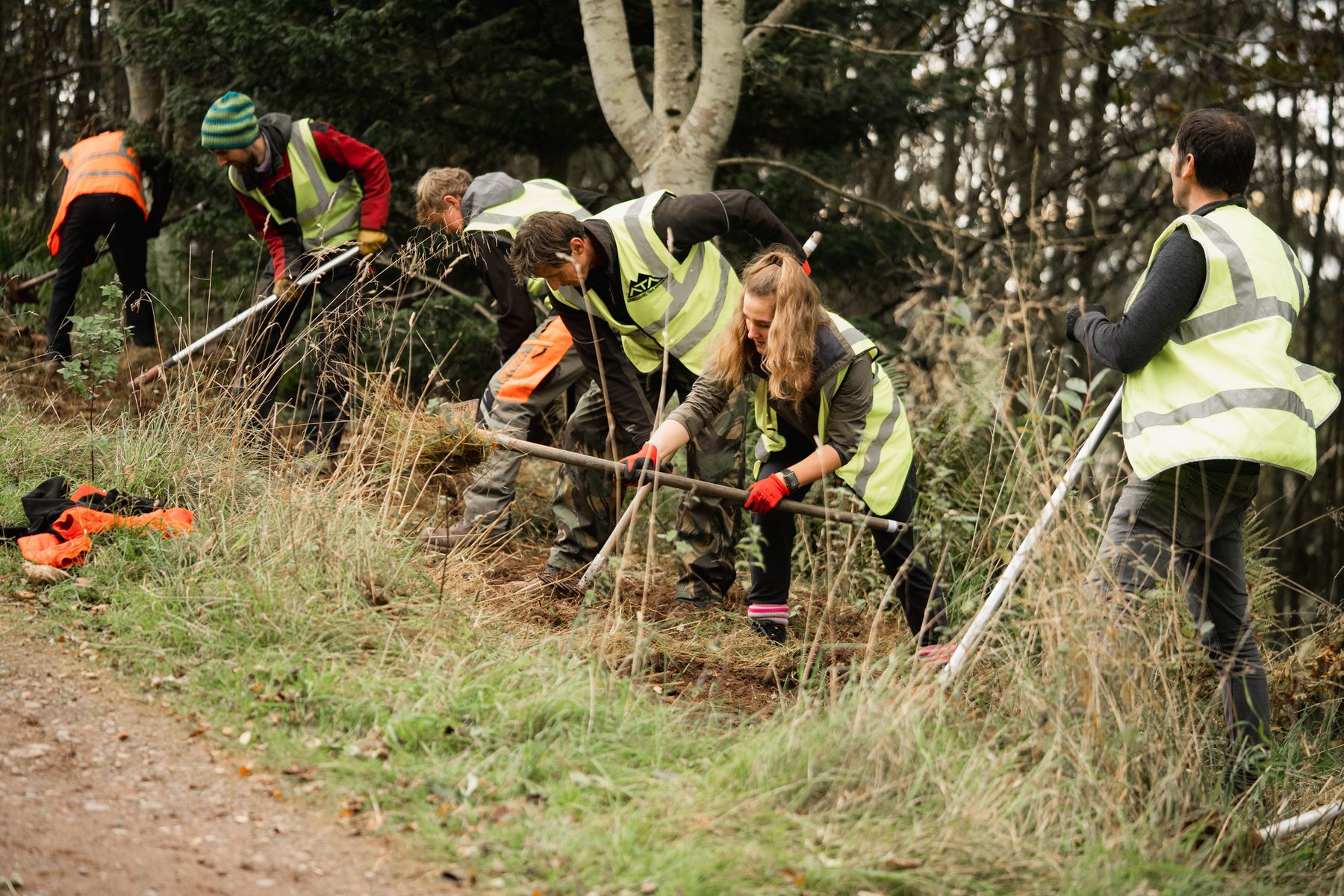
Kinnoul is covered by the Tayside Trail Association, and it was a fun sociable session working alongside their regular volunteers to turn their vision into reality. The forest was busy with riders practicing for the next weekend’s edition of Fair City Enduro, and as the line took shape, there was plenty of time to reflect on what we’d heard, and make plans for a return visit to ride what we’d built.

There’s more info on the great work that Scottish trail associations have been doing on the DMBinS website – contact them to find your nearest one and learn how you can get involved.

